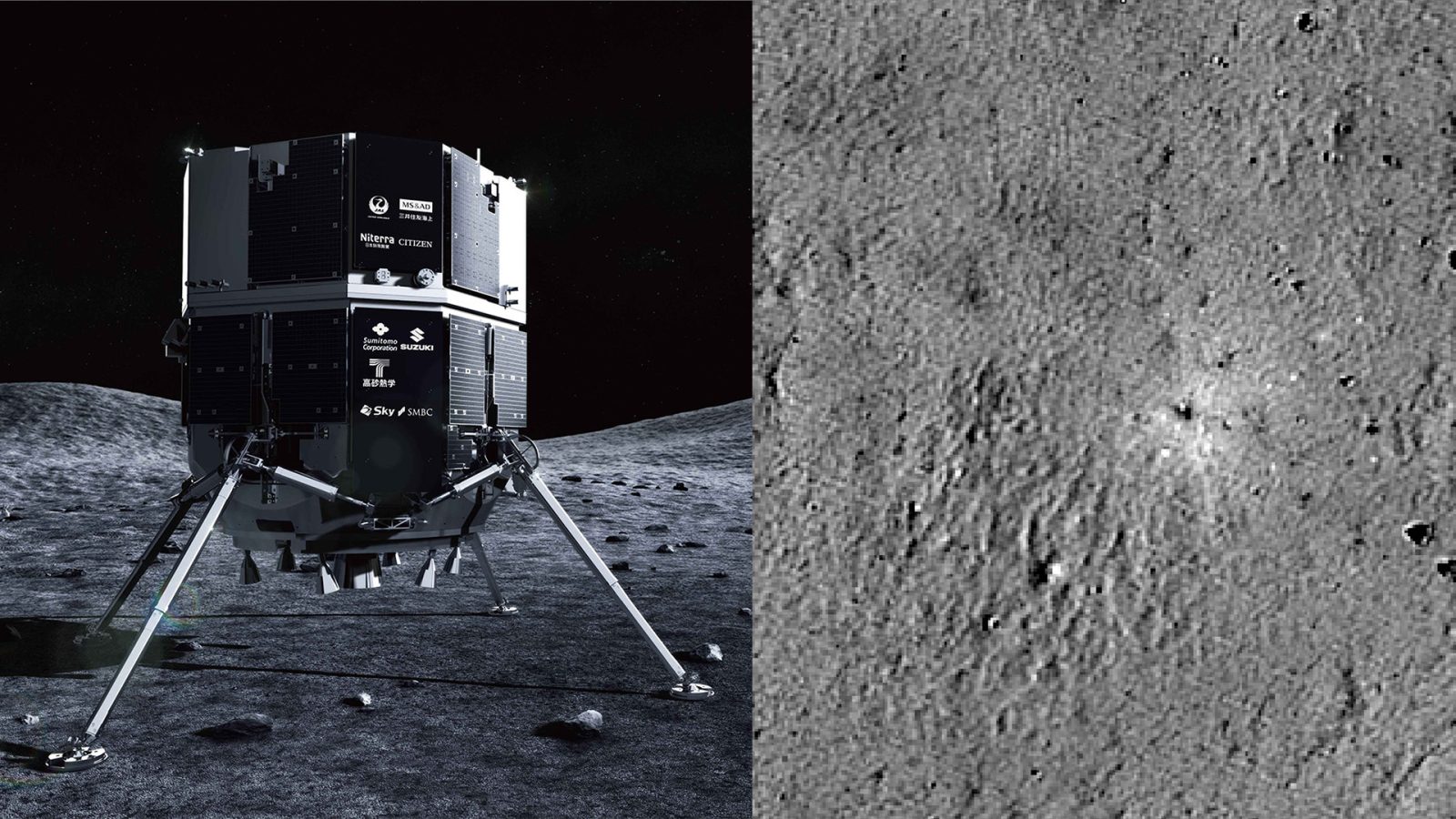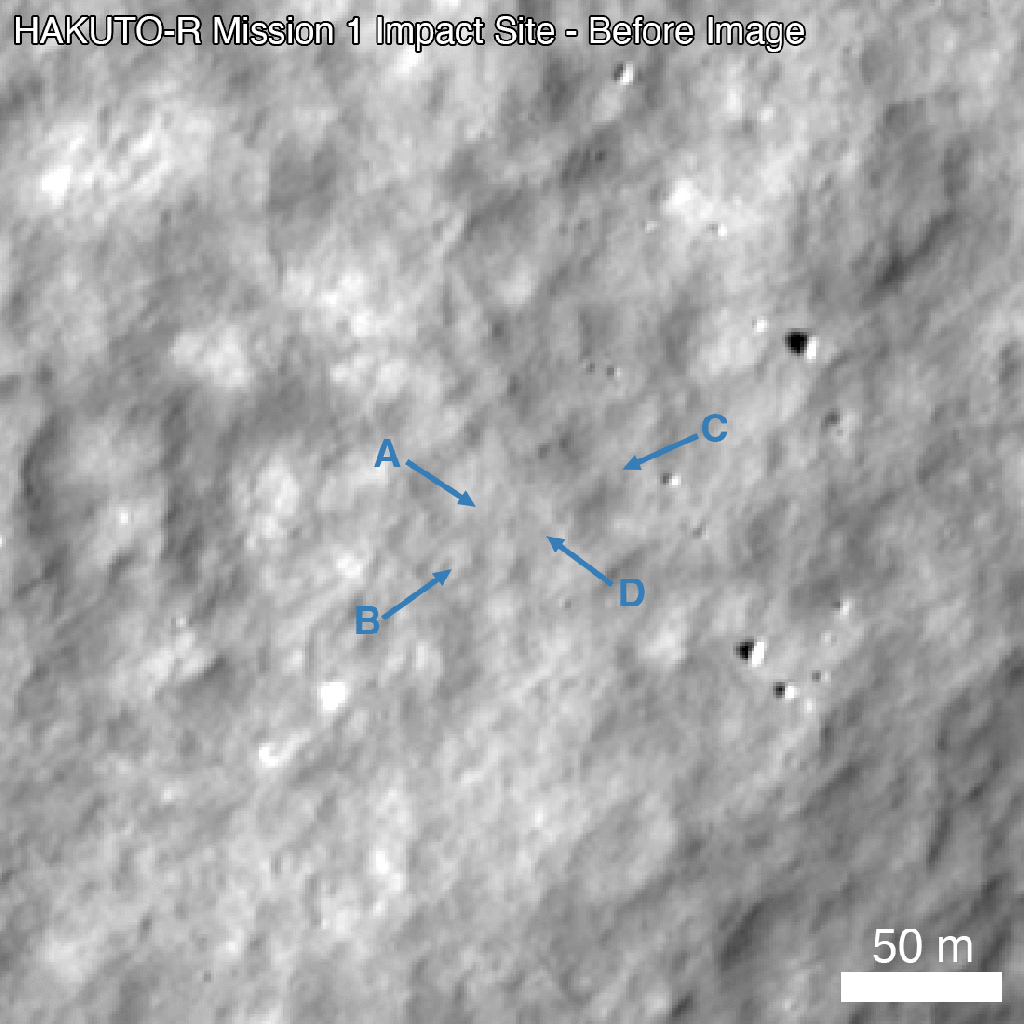
Last month, the Japan-based company ispace attempted to land the first-ever privately funded lunar lander on the Moon. Named the HAKUTO-R, it sadly did not land softly, and NASA’s Lunar Reconnaissance Orbiter discovered its impact crater.
LRO found the impact crater the next day
The HAKUTO-R lander attempted to make its landing on April 25. During ispace’s livestream, it was announced that the team had lost communication with it just before the expected touchdown. You could tell that the vibe in the room was not of pending excitement or anxiety but of dread, hearing the news everyone knew was true. Something on the lander went wrong.
On April 26, teams that operate the cameras of NASA’s LRO at Arizona State University captured photos of HAKUTO-R’s landing site at Lacus Somniorum, the lander’s backup landing location on the Moon. While it took some time for teams to analyze the photos and release them, it’s clear that there is a new impact crater at the location, lining up with HAKUTO-R’s landing failure.

ispace determined that the HAKUTO-R had two causes of the crash that created the Moon’s latest impact crater. First, the lander experienced an error in determining its altitude in relation to the lunar surface. Second, HAKUTO-R ran out of fuel before landing, causing an accelerated landing on the Moon’s surface, aka crashing.
While ispace couldn’t complete all of Mission 1’s objectives, it has not dampened the company’s mood from pushing forward. ispace is already developing landers for its Mission 2 and Mission 3 flights of HAKUTO-R planned for 2024 and 2025, respectively.
Although we do not expect to complete the lunar landing at this time, we believe that we have fully accomplished the significance of this mission, having acquired a great deal of data and experience by being able to execute the landing phase. What is important is to feed this knowledge and learning back to Mission 2 and beyond so that we can make the most of this experience.
Takeshi Hakamada, Founder and CEO of ispace
Commercialization of the Moon is in full swing. ispace continues to work on being the first private company to land on the Moon with HAKUTO-R, and NASA just selected its second Human Landing System for the Artemis Program. Not to forget, Astrobotic’s Peregrine lander is finalizing testing and will soon be integrated onto ULA’s Vulcan rocket for its attempt to land on the Moon.
However many more craters we might create in this new era, it’s important to note each one adds experience and knowledge to the teams working the missions. The future is bright for commercial space operations, from low Earth orbit to the Moon and beyond.
FTC: We use income earning auto affiliate links. More.



Comments